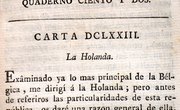Students of English as a second language, or ESL, are unlikely to be particularly receptive to a traditional lesson structure on the last day of class. Instead, provide a lesson that gives you and your students an opportunity to review some of the work they have done in class. Have a little fun with English language games and activities.
Back to the Board
Divide the class into groups of three. Each group selects one person to sit in a chair with their back to the board. Write on the board a sentence containing vocabulary or structures you have studied in the course. For example, with an elementary level class you might write, “He his seldom late to dinner.” Students in each group must now explain to the member of their group who is sitting in the chair what you have written on the board. They cannot, however, use the same words you have written. To explain the word, “he,” for example, they may choose to say, “A pronoun; it isn't 'she.'”
Vocabulary Review
Divide the class into two teams. Issue each team identical slips of paper on which you have written vocabulary studied in class. Each team divides the slips of paper up amongst themselves. Call out one of the words. The student from each team who has the paper with the word on it must race to the board and write a sentence using this word as quickly as possible. The student who is the quickest to write a correct sentence on the board wins a point for his team. Continue until you have covered all the words.
Adverb Acting
Select 20 adverbs, preferably that you have studied during the course, and write them down on slips of paper. Examples of adverbs could be “angrily,” “happily” and “passionately.” Divide the class into groups of four or five. Invite one student to come to the front of the class and hand him one of the slips of paper. Ask him to mime an action, such as eating an apple or opening a door, and to perform it in the manner of the adverb. The other students try and guess what the adverb is. The first student to guess correctly wins a point for her team. Continue with a student from a different group and another adverb until all the adverbs are finished or until the students' interest starts to wane.
Thank You
Prepare three slips of paper for each student on which you have written the names of other students in the class. Each student writes down a sentence on each slip of paper thanking that student for something. For example, “Thank you for talking so much during speaking activities” or, “Thank you for helping me understand the present continuous tense.” Gather up the slips of paper and redistribute them to the students. They then find the students whose names are on the pieces of paper and read the sentences to them.
Related Articles
References
- The Internet TESL Journal: Games and Activities for the English as a Second Language Classroom
- “Sixty-one Cooperative Learning Activities in ESL”; Charles Hirsch and Deborah Beres Supple; 1996
- “96 Games For Beginners In Esl”; Doris Anderson and Joanna Karme; 1994
Writer Bio
Based in rural Andalusia, Spain, Joel Barnard has been teaching English and writing travel-related articles since 1999. His articles have appeared in "Travel and Food" magazine, "Backpacker Essentials" magazine and a number of travel websites. He holds a Bachelor of Arts with honors in sociology and comparative Western societies from East London University.











